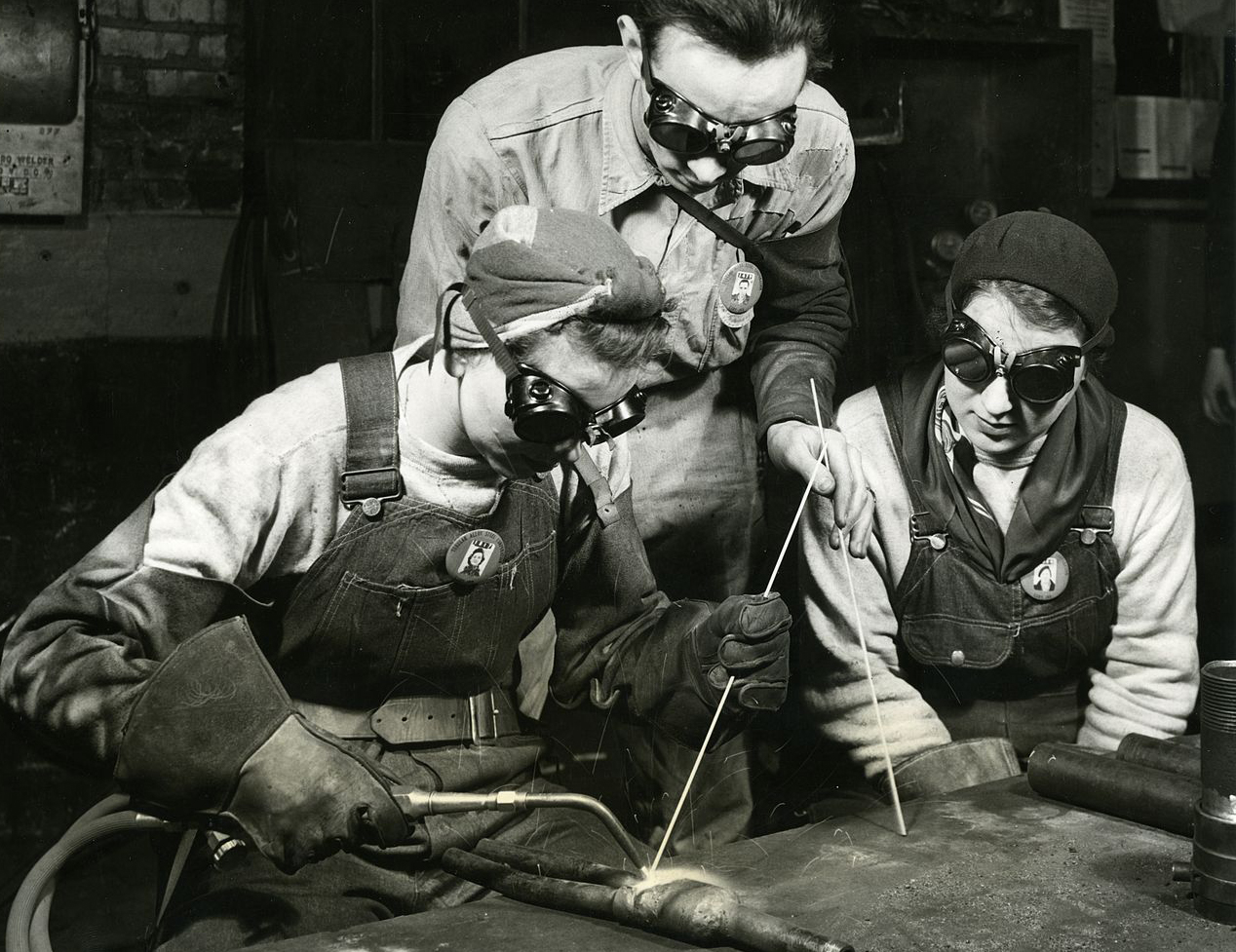“Factory jobs are going to come roaring back into our country,” President Trump declared last month as he introduced reciprocal tariffs. “We’re going to supercharge our industrial base.”
But American manufacturing isn’t what it used to be. Since its 1979 peak of 19.6 million jobs, the industry has shed over a third of its workforce. Today, just 12.7 million Americans work in factories.
Support for reviving those jobs goes beyond Trump. Factory work has long been a bipartisan talking point, and a joint survey by the Cato Institute and YouGov found that 80% of Americans believe the country would be better off if more people worked in manufacturing. So why is there such a widespread longing for these jobs—and does the idea of reviving factory work hold up in today’s economic landscape?
We explored four central questions around the cultural and political pull of factory jobs.
Question 1: Why do factory jobs carry so much nostalgic weight in American culture?
Jeffrey Gonzalez, an English professor at Montclair State University, has studied “smokestack nostalgia” in various works of art.
“This kind of nostalgia imagines factory jobs as stable, respectable work passed down through generations,” he says. “But it ignores that those wages were the result of intense union fights, often marked by real conflict.”
Today, factory wages sit in the lower half compared to other jobs. A Federal Reserve paper attributes much of this wage decline to shrinking union membership. Gonzalez notes that union-strong northern plants were undercut by anti-union policies in the South, which attracted manufacturers with fewer labor protections.
Vox correspondent Dylan Matthews adds that some of the romanticism might reflect guilt from people with abstract “email jobs” rather than hands-on, physical labor.
“I definitely have an email job now,” he says. “I’m chasing page views that turn into ad revenue, that sells cars. The economic chain is so disconnected from what I actually do that I think people feel emotionally detached. Physical labor seems more authentic.”
Question 2: Why is factory work so politically appealing?
Beyond economics, Matthews suggests that conservative views often idealize factory jobs as a symbol of traditional family roles.
“Part of the mythology includes the ‘family wage’—a salary high enough that the man works, and the woman stays home,” says Matthews.
Figures like Vice President J.D. Vance have also linked manufacturing to national defense, arguing for more domestic weapons production.
“We’ve sent tons of artillery shells to Ukraine, exhausting our supplies,” Matthews explains. “And a big part of the war involves drones—many of which are made in China. That worries a lot of people in Washington.”
This view fits a broader narrative where China is seen as a strategic rival, raising concerns about reliance on Chinese-made technology.
Still, factory job revival isn’t just a conservative concern. Bernie Sanders and past Presidents Biden and Obama have championed rebuilding the industrial base. Matthews says the left’s nostalgia also stems from labor’s powerful role in mid-20th-century Democratic politics.
“In the ’50s and ’60s, strong unions like the United Auto Workers helped push progressive policies,” he says. “Major programs like Medicare probably wouldn’t have passed without union backing.”
Question 3: Do hopes for more factory jobs reflect the actual state of U.S. manufacturing?
Many factory roles already exist—about 400,000 were unfilled as of February, according to the National Association of Manufacturers. Yet companies still struggle to find workers.
“Today’s factory job isn’t like it was in the 1950s,” Matthews notes. “It used to offer decent wages for high school grads. Now, that’s less often the case.”
As for creating new jobs, it might not be easy. Harvard economist Robert Z. Lawrence argues that productivity gains—not foreign competition—are the main reason for job loss in manufacturing.
Even if new factories are built, they might not employ many people.
“There’s been a lot of investment in automation to minimize the need for human labor,” Matthews says. “Machines now do much of the work.”
He also challenges the idea that manufacturing alone should define a “good job.”
“I want people to say Amazon warehouse workers deserve higher pay too. Why shouldn’t that job be just as dignified as working on a GM assembly line? Jobs are only good if we choose to make them good,” he says.
Question 4: Could Trump’s policies really bring back manufacturing jobs?
Trump’s past tariffs had little effect on employment in protected sectors, according to the National Bureau of Economic Research.
“One analyst compared tariffs to running someone over, then reversing the car to fix it,” Matthews says. “It doesn’t work that way. Undoing trade policy doesn’t magically restore jobs lost under it.”
Trump’s immigration stance may also play a role. As of 2023, roughly 3.2 million foreign-born workers—around 25% of the manufacturing workforce—are employed in U.S. factories. His deportation policies could further shrink the available labor pool.



